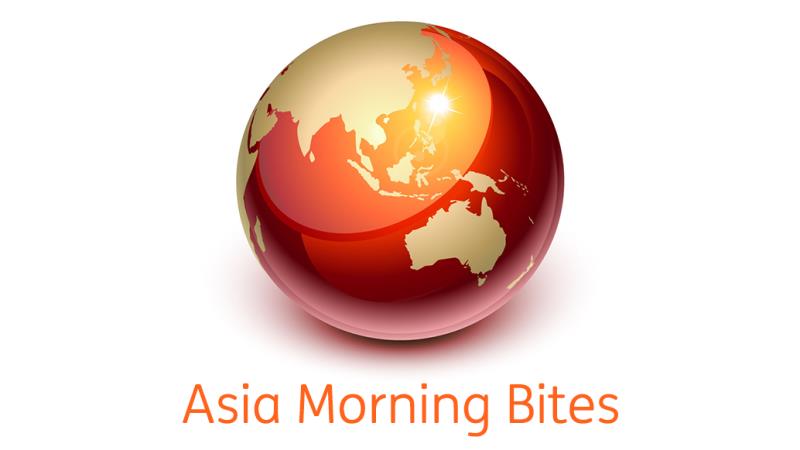
Asia Morning Bites
Global Markets: Further talk about tariffs and the appointment of some China hawks to Trump's cabinet - most notably Marco Rubio reported as taking the Secretary of State position, though Trump also named Mike Waltz as national security advisor, who is another China hawk and has publicly said that China is an existential threat to the US. This news helped drive Treasury yields higher. The 10Y Treasury yield rose about 12bp to 4.42%, while 2Y yields pushed up 8.6bp to 4.34%. EURUSD continued to move lower on the higher yield/tariff story and there was similar weakness across the G-10 currencies. Cable was particularly weak, falling a full per cent, and the JPY has risen to the high end of 154. Asian FX was also weaker across the board. The INR continues to be held steady at about 84.40, and the CNY has risen modestly to 7.2347. But there was considerable weakness from the THB, following reports that the government will appoint a former finance minister and critic of the BoT's hawkish policy as Chairman. Equity markets were quite soft yesterday. The S&P 500 and NASDAQ both lost a little ground, while there were bigger losses from the Hang Seng (-2.84%) and the CSI 300 (-1.1%).
G-7 Macro: I t was a quiet day yesterday in macro space, though Germany's ZEW survey again disappointed. Today, the US October CPI index will be released. James Knightley is expecting the headline rate to come in at 0.2% MoM with core at 0.3% MoM, which is also the consensus view. This is above the 0.17% MoM rate that needs to be averaged over time to hit the 2% inflation target and so could raise some doubts about whether the Fed will cut rates in December. James thinks they will, given the cooling jobs market and the fact that monetary policy is still in restrictive territory. But there is the potential for a pause at the January meeting following the US election.
South Korea: The unemployment rate rose slightly more than expected to 2.7% in October from 2.5% in September (vs. 2.6% market consensus). The unemployment rate has been on the rise since August, suggesting that the labour market is gradually weakening. The labour force participation rate rose to 64.4 from 64.3 in September. So, the rise in unemployment is partly due to an increase in the number of people looking for work. Consequently, we are not too worried about the unemployment rate itself, which is still well below 3%.
However, employment details showed that the domestic economy softened. Manufacturing (3K) and construction (2K) added jobs but only very marginally, while key service sectors such as wholesale and retail sales (-43K), transportation (-15k), and financials (-10k) shed jobs. Among other services, hotels and restaurants (2k), real estate (8k), education (32k), and health and social work (28k) added jobs, but the gains were limited and these tend to be low-skilled and low-paid jobs.
Overall, today's jobs report added to concern about the weak domestic economy, but this won't have any immediate impact on the Bank of Korea's (BoK) interest rate decision at its November meeting. However, it may shift the BoK's policy priority to supporting the domestic economy next year. We currently expect rates to remain on hold until April as the renewed KRW weakness and rising pipeline prices combined with the high level of private debt will limit the BoK's pace of rate cuts.
India: October inflation data yesterday came in hotter than expected at 6.21%, which is a 14-month high and also breaches the upper end of the central bank's target. This is up from 5.49% previously and above expectations of 5.9%. This higher number was driven by stronger food prices, which make up about half of the consumer price basket. The stronger number also means that the Reserve Bank of India (RBI) is likely to hold rates steady in December.
Australia: 3Q24 wage prices came in a little softer than expected, though the QoQ run-rate remained steady at 0.8%. Despite this, the year-on-year growth rate slowed to 3.5%. This is a necessary but not sufficient condition to enable the Reserve Bank of Australia (RBA) to start thinking about rate cuts and to cross out the risk of an upside-tail risk to rates. That said, the argument for a near-term cut remains very thin, and we don't expect any easing from the RBA until 1Q25 at the earliest.
November 13th
Australia: 3Q wage price index
Japan: October PPI
S Korea: October import index, export index, unemployment rate
November 14th
Australia: October employment change, unemployment rate
India: October wholesale prices, November foreign exchange reserves (Nov 14 – Nov 15)
November 15th
China: October industrial production, retail sales, surveyed jobless rate
Indonesia: October imports, exports, trade balance
India: October imports, exports, trade balance
Japan: 3Q GDP
Philippines: September overseas cash remittance

Legal Disclaimer:
MENAFN provides the
information “as is” without warranty of any kind. We do not accept
any responsibility or liability for the accuracy, content, images,
videos, licenses, completeness, legality, or reliability of the information
contained in this article. If you have any complaints or copyright
issues related to this article, kindly contact the provider above.


















Comments
No comment